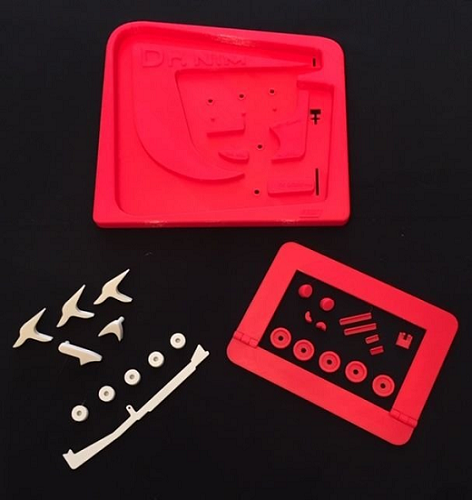The European Union has taken a serious interest in regulating 3D printed toys. As additive manufacturing processes only continue to pick up steam, affecting nearly every industry in some way, safety is becoming more of a concern. In the 80s of course, with the inception of SLA 3D printing, most digital fabrication was used for rapid prototyping with a limited range of software and materials (generally photopolymers) available to users.
There are countless new materials on the market now, as ambitious users and researchers around the world continue to forge ahead, overcoming obstacles, and creating new ways to fabricate complex geometries, whether for prototypes or functional parts. This doesn’t mean all 3D printing materials are safe to use—or that structures and wiring may not cause a potential hazard. Children have the potential to be very hard on toys, and especially over time. They may ingest small pieces and choke, or experience poisoning from toxic chemicals.
Concern over toy safety encompasses the entire industry, however, with basic measures in place regarding “general risks” for children and anyone who may be exposed to toys, along with “particular risks” surrounding fire, chemicals, radioactivity, electrical issues, and more. The EU offers recommendations to 27 countries, and also oversees the Innovation Radar Platform—recently naming WAZP as a Key Innovator. And while safety is a major focus, here, the goal is to create a solid innovative industry with a strong supply chain—meaning that quality products need to be at the center.
The platform is used to highlight new concepts and the inventors behind them, and is funded by the EU as well as other framework programs centered around research and innovation—often including applications like consumer goods, manufacturing, distribution of products, and retail goods. WAZP is certainly well-acquainted with most of those areas of industry, acting as a global supply chain company for additive manufacturing. The Tralee, Ireland-headquartered company gained notice during the Horizon 2020 iBus Project, known for focusing on internet business models for toys, as well as furniture, and commissioned by the University of Limerick.
Germany’s University of Paderborn has also been recognized as a key innovator, and the two companies will be overseeing the creation of an “innovative high confidence quotation model for AM toys safety.”
Four levels, created by Innovation Radar, will be explored:
- Value creation opportunities
- Technology readiness
- Business readiness
- Market readiness
WAZP will offer their experience in creating successful models for 3D printing supply chains, including “value” for stakeholders like the suppliers of toys, manufacturers, distribution companies, stores selling toys, and consumers too. Sustainability is a key goal in these business models, bolstering supply chains within the 3D printed toy industry.
WAZP’s success has been in providing business models that offer customized supply chain strategies. Their team believes in producing complex, quality designs, but within a “no-waste culture.” Research and development will continue with the University of Limerick, University of Paderborn, and the European Union. Check out information about Innovation Radar and EU funded projects here.
3D printing within the toy industry has brought many new concepts and products to life for kids, and consumers of all ages, from spinning tops to parts for train sets, LEGO constructions and even go-karts, and more.
[Source / Images: WAZP]
The post E.U. to Regulate 3D Printed Toys & Supply Chain appeared first on 3DPrint.com | The Voice of 3D Printing / Additive Manufacturing.








